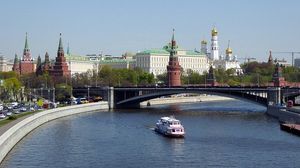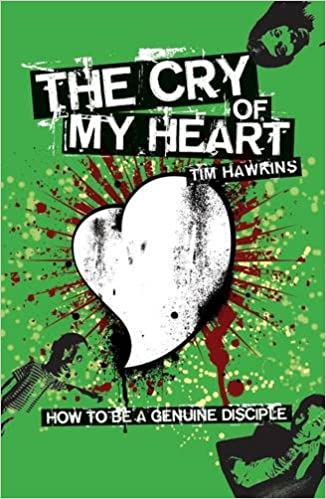Through Western eyes (2)
Robert Letham draws a vivid and striking picture of a church that is a complete stranger both to the Western world and to Protestants who live in the East. The Eastern Orthodox church is presented to readers through the centuries, revealing many cultural differences and political misunderstandings. Robert Letham’s book impels us to feel the touch of history.
He conducts us through the worship experience of Eastern Orthodox believers. We can see ancient icons hanging on the walls and smell the burning candles. Liturgy and worship lie at the heart of the Eastern church and the author tries to explain their meaning.
He wants to introduce the Eastern church to the Western world and does so successfully but somewhat subjectively – it is almost impossible to appraise historical events objectively.
For example, was Constantine truly converted in AD 312 as Letham insists (and as is the Eastern view) or was it merely a political act of recognising Christianity? The explanation of the subsequent history depends on this greatly.
Hierarchy
‘Orthodoxy is a family of self-governing (autocephalous and autonomous) churches’, says Dr Letham. That’s true, but each local church has its own hierarchical structure. And what do we mean by ‘local church’? For Orthodoxy, ‘local’ means ‘regional’ – there is the Russian Orthodox church, the Greek Orthodox church, the Syrian and so on.
Each church has its own patriarch, archbishops and bishops. The Eastern church never embodied power in a single bishop as does Rome, but hierarchy is nevertheless an essential part of its structure.
Submission of lower rank ministers to their superiors of higher rank is a necessary part of the life of the church. We have to remember that this church was built to support a feudal system of government and monarchy. For example, the Russian tsars did everything they could to organise a church that suited them, and the first step to this direction was taken by Constantine the Great.
Councils and Fathers
The theology of the Orthodox church often remains veiled from Western eyes. Many liken the Eastern church to the church of Rome, but in fact it is closer theologically to the Reformed church than to Rome.
The Eastern Orthodox church claims that its theology is that of the councils and Fathers of the church. ‘Orthodoxy’, says Letham, ‘is the church of the seven ecumenical councils’. That’s true. Officially, all decisions of all councils are recognised. But in reality this is not so. The same applies to the Fathers. Augustine, for example, is recognised as a Father of the church, but in practice his name is never mentioned (at least in the Russian church).
The Creed of Nicaea forms the basis of the Eastern church’s confession of faith. It was developed by subsequent councils, so that after seven councils the Eastern church accepted the Trinity, the person of Christ as God and Man, and the authority of the Scripture – but without admitting Sola Scriptura, the slogan of Reformation.
The Russian Orthodox view is that since the canon of the Bible was recognised by tradition (councils and Fathers), tradition is no less important than Scripture.
Worship
Dr Letham leads the reader in imagination into an Orthodox church, where we see an ‘iconostasis’ – a wall oficons and religious paintings separating the nave from the sanctuary. The ‘sanctuary’ behind the wall represents the Holy of Holies and only priests can enter it.
There are three doors in the iconostasis – symbolic routes from heaven to earth. Symbolism is everywhere. The author gives a detailed description of this symbolism and explains the theological meaning of icons. This is not as simple as it may seem. The church uses illustrated or painted ‘expositions’ of the Old and New Testaments. You may see patriarchs on the walls, the Virgin Mary and John the Baptist – or a lamb ready for sacrifice and Jesus Christ crucified. Above, on the ceiling, you may see Christ in his glory in the heavens.
Robert Letham displays a warm attitude towards the Eastern church as he tries to explain that icons are not the subject of worship. As a result, the chapter ‘Theology of Icons’ is a contradictory one.
Icons
The author supports the official teaching of the Orthodox church, which prohibits the worship of any image. This was a decision of the Nicaea II council. Dr Letham writes: ‘The Orthodox are equally clear on the point that the icons are not objects to worship’.
But this is an official position adopted by the Orthodox church for the benefit of those who believe in the second commandment (namely, Protestants). Orthodox believers would never tell Protestants that they worship icons. They would say that images help them to worship God and that icons are only windows through which we may reach God.
It was a surprise to read in Letham that ‘reformed theology believes in icons too’ (p.160). ‘God has imprinted evidence of his own beauty and glory through creation’. Yes indeed, but this ‘mirror on which we may observe God’ was created by God himself, not by us.
It is true that ‘the Bible brings us into contact with the existence of images. Man himself is created in the image of God’. But don’t forget that that image was also made by God, not man. It is hardly the same as hanging up a portrait of Dr Martin Lloyd-Jones as an icon to help us worship God!
Orthodoxy uses special terms connected with the worship of icons. It organises special religious processions with the purpose of worshipping this or that icon. Media officially announce from time to time that in such and such a city there was paraded a miracle-working icon of Kazan Virgin Mary (or some other icon). According to the teaching of the Russian church, icons serve not only as objects of worship but may also have healing abilities.
Icons and relics are not merely used in addition to the Scripture; they are used instead of Scripture.
Liturgy
Dr Letham is delighted that long Bible passages are read during Orthodox liturgy and compares this with the short Bible readings heard in Reformed churches. But it is hard to believe the author’s claim that there are ‘Reformed churches’ where the Bible is not read at all.
It is also strange that an expert on Orthodoxy apparently does not know that liturgical Bible readings in the Russian Orthodox church are in an old church Slavonic language – one incomprehensible to most worshippers. As a result, the reading resembles a magician’s formula or wizard’s spell. It does not mean anything; you have only to pronounce the right words in the right places.
Sacraments
The Eastern (Russian) church recognises seven sacraments – baptism, anointing, eucharist, repentance, holy orders, matrimony, and consecration of oil. Other Orthodox churches may have slight differences here.
Baptism is a saving sacrament – through baptism a person receives full forgiveness of sins, original or actual, but they have to renew forgiveness with confession (repentance) of sins before every eucharist.
During the eucharist, the bread and wine are turned into the actual body and blood of Christ after prayer by a priest. We have to remember that all sacraments are regarded as having magical power – they are used as magic wands. This, at least, is the practice of the Russian church.
Theoretically, according to Dr Letham, any Orthodox believer may perform sacraments, but in reality that’s not true – a priest has special power to perform sacraments and can employ supernatural forces to do it. Theory and practice are not the same.
Sin and justification
Although the Orthodox church takes a serious view of sin, it rejects the doctrine of original sin. ‘All people inherit the corrupt nature received from Adam, but there is no inheritance of Adam’s guilt’. A person is responsible only for his own sins.
The teaching on justification also reveals differences between the Eastern and Western churches. ‘Orthodoxy views Christianity as mainly personal and mystical – centred in union with God – in contrast to the West’s focus on the legal’. The East teaches that ‘deification’ is needed for a person to be saved, while Reformed teaching is that the basis for salvation is justification.
Nevertheless, the Orthodox church believes in justification by faith. This is not always obvious because few people appreciate the great differences between the Orthodox church and the church of Rome.
The Russian church believes in the mercy of God rather than in good works. Indeed, good works are stressed in its teaching, but only in the context of deification. The main and most frequent prayer in an Orthodox church is, ‘Lord Jesus Christ, Son of God, have mercy upon me a sinner’.
For me the book was very useful. I learned from it that Orthodoxy is closer to the Protestant church than to Rome. Reformation in Orthodoxy could therefore be less painful than it was in the 16th century in Western Europe.
But there would still have to be profound changes. With the worship of saints and icons, and the veneration of relics, there is a strong element of paganism in the Russian Orthodox church (and possibly in all Eastern churches).
Georgi Viazovski
The author is pastor of Christ’s Covenant Baptist Church in Minsk, Belarus












